Synopsis
In the 17th-century Venice in an alternative world where humans and some animals live together and even can be coupled, Don Lope de Villalobos y Sangrin, [2] a Spanish wolf, and Armand Raynal de Maupertuis, [3] a French fox, are hired by old and rich Cénile Spilorcio to retrieve a treasure map from a Turkish ship. As they deliver the map, Spilorcio plots to have them arrested and sent to galleys; during the arrest, Maupertuis spots Spilorcio's adoptive daughter, Séléné, and the two fall in love. Spilorcio then sends his son Andreo and his servant Plaisant to find the treasure.
On the galley, Maupertuis and Don Lope meet with white rabbit Eusèbe. On her way, the galley sails into the Turkish ship, the same one from where they stole the map, and boards her; in the battle, Maupertuis and Don Lope are set free and help the Turks gain the upper hand, setting the slaves free and taking Captain Mendoza, the villainous captain of the galley, prisoner. Don Lope and Raïs Kader, captain of the Turkish ship, have an argument and promise each other to arrange for a duel when time is convenient. [4] The party sails to Malta, where Don Lope meets Hermine, a gipsy girl and Andreo's love interest, with whom he falls in love. Mendoza gets free and makes a deal with Spilorcio.
Finding a ship, the party set sails to Atlantis to retrieve the treasure with Andreo and his servant. In the process, they run afoul a pirate ship and are taken prisoners. Maupertuis and Don Lope are fed to a giant sea monster, inside of which they find the Flying Dutchman. Gaining control of the monster, they manage to reach an island of the archipelago where the treasure is supposedly hidden, where they meet with eccentric scientist Bombastus Johannes Theophrastus Almagestus Wernher von Ulm.
Exploring the island, Maupertuis and Don Lope discover that it is inhabited by castaway Selenites, people from the Moon. They are led by Prince Jean sans Lune, exiled brother of the King of the Moon, who plots to seize power; the treasure map was a trick of his to lure Earthmen into bringing him a moonstone, necessary to return to the Moon. Séléné's necklace, which Maupertuis wears as a token, turns out to be such a moonstone, and it is used to propel the Prince's galley into space as the full moon, casting its rays, attracts all Moon matter. The pirate ship, arrived meanwhile and laden with lunar fruits gathered on the island, is also sucked into space.
Maupertuis and Don Lope's party set in pursuit in Bombastus's custom-made spaceship. Bombastus, however, falls overboard, and they are left drifting towards the Moon; meanwhile, Bombastus is captured by a party led by Mendoza and Spilorcio, and persuaded to build a rocket.
Arriving on the Moon, Maupertuis and Don Lope's party make contact with the King of the Moon, informing him of the return of Prince Jean. The King decides, as a precaution, to send Maupertuis and Don Lope seek the "Maître d'Armes", an Earthman of great military expertise, who had previously helped defeat the Prince. Meanwhile, Mendoza's party arrives and makes contact with Prince Jean; Mendoza is hired to raise an army from local tribes of mimes.
In their quest for the "Maître d'Armes", Maupertuis and Don Lope meet with the pirates again. They hire them for the journey to the "Maître d'Armes", only to be betrayed when the pirates turn out to have turned privateers in the service of Prince Jean. As the ship closes to her destination, Maupertuis and Don Lope escape when chimaeras attack. They find the "Maître d'Armes", who eventually agrees to help because he was friend with Lope's father.
As the Maître d'Armes gathers his three companions of the previous campaigns against Prince Jean, Mendoza's army marches upon the capital of the Moon. The heroes' party, grossly outnumbered, is quickly destroyed, and the capital falls in the hands of Prince Jean.
The heroes have survived, however, only Don Lope sustaining a musket wound, and the Maître d'Armes being taken prisoner. He escapes with Eusèbe's help, and flees into the wilderness, where he befriends the mime tribesmen. Meanwhile, Maupertuis and Don Lope's party plot to set the King free from his brother; to regain their honor lost serving the Prince, the pirates join them. As Prince Jean gives a party to celebrate his rise and put his brother to death, both parties execute their plans, while Mendoza's henchmen trigger their own attempt at a coup d'État. In the confusion, Prince Jean is taken prisoner, the king is restored to power, the mimes gain an equal social status with other Selenites, and Mendoza and Spilorcio are sent into hiding, while the lovers are reunited.
As Prince Jean is exiled from the Moon, the heroes discover that Séléné is actually the lost daughter of the King of the Moon. A love triangle appears when Armand's friends discover that Séléné seems to prefer the "Maître d'Armes" to Armand, and to be oblivious to Armand's love for her. The resulting tension breaks the friendship between Lope and Armand, and Armand stays on the Moon while Lope, Eusèbe, Kader, Andreo and Plaisant prepare to sail to Earth.
But Armand finally realizes that Séléné is in love with the "Maître d'Armes", and decides to leave them together and commit suicide. He is kept from jumping off a cliff by the news that his friends have been captured by Mendoza, who has commandeered their ship and is sailing back to Earth. He joins with the pirates and Bombastus to retrofit the pirates' moving house into a spaceship. They catch back with Mendoza, free their friends, and Armand kills Mendoza in a duel. As they talk of following Raïs Kader's plan to attack Maracaibo and free his daughter Yasmina, a story told by the pirate captain reveals that Yasmina is none other that the Bohemian Hermine, who had been with them from the start.
Once Kader and Lope find a way to finally fight their duel bloodlessly, the heroes make plans for their retirement: Don Lope and Hermine are to marry, Armand wishes to write about their adventures, Bombastus plans to return to the Moon through another zany invention, and Andreo and Plaisant become actors. But as Lope and Eusèbe escort Armand back to Venice, they find a damsel in danger and throw themselves in that new adventure.

William Kidd, also known as Captain William Kidd or simply Captain Kidd, was a Scottish privateer. Conflicting accounts exist regarding his early life, but he was likely born in Dundee and later settled in New York City. By 1690, Kidd had become a highly successful privateer, commissioned to protect English interests in North America and the West Indies.
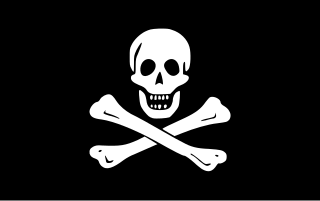
Piracy is an act of robbery or criminal violence by ship or boat-borne attackers upon another ship or a coastal area, typically with the goal of stealing cargo and other valuable goods. Those who conduct acts of piracy are called pirates, and vessels used for piracy are called pirate ships. The earliest documented instances of piracy were in the 14th century BC, when the Sea Peoples, a group of ocean raiders, attacked the ships of the Aegean and Mediterranean civilisations. Narrow channels which funnel shipping into predictable routes have long created opportunities for piracy, as well as for privateering and commerce raiding.
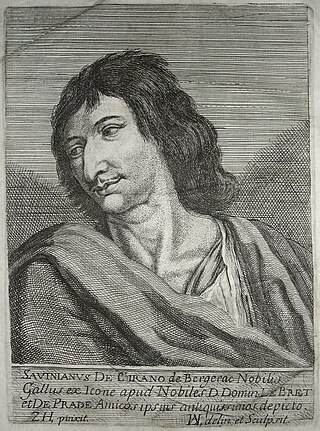
Savinien de Cyrano de Bergerac was a French novelist, playwright, epistolarian, and duelist.

Captain James Hook is the main antagonist of J. M. Barrie's 1904 play Peter Pan; or, the Boy Who Wouldn't Grow Up and its various adaptations, in which he is Peter Pan's archenemy. The character is a pirate captain of the brig Jolly Roger. His two principal fears are the sight of his own blood and the crocodile who pursues him after having previously eaten Captain Hook's hand cut off by Pan. An iron hook that replaced his severed hand has given the pirate his name.
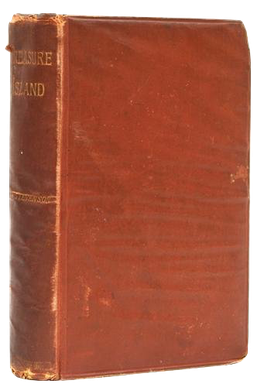
Treasure Island is an adventure and historical novel by the Scottish author Robert Louis Stevenson. It was published in 1883, and tells a story of "buccaneers and buried gold" set in the 1700s. It is considered a coming-of-age story and is noted for its atmosphere, characters, and action.
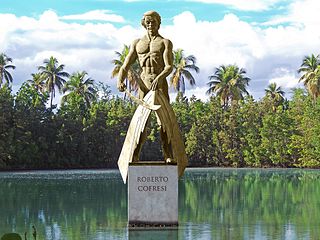
Roberto Cofresí y Ramírez de Arellano, better known as El Pirata Cofresí, was a pirate from Puerto Rico. He was born into a noble family, but the political and economic difficulties faced by the island as a colony of the Spanish Empire during the Latin American wars of independence meant that his household was poor. Cofresí worked at sea from an early age which familiarized him with the region's geography, but it provided only a modest salary, and he eventually decided to abandon the sailor's life and became a pirate. He had previous links to land-based criminal activities, but the reason for Cofresí's change of vocation is unknown; historians speculate that he may have worked as a privateer aboard El Scipión, a ship owned by one of his cousins.
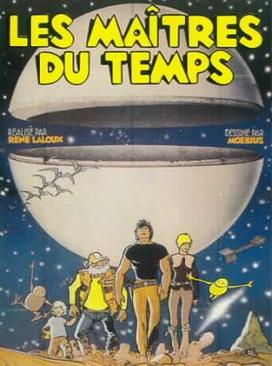
Les Maîtres du temps is a 1982 independent animated science fiction film directed by René Laloux and designed by Mœbius. It is based on the 1958 science fiction novel L'Orphelin de Perdide by Stefan Wul.
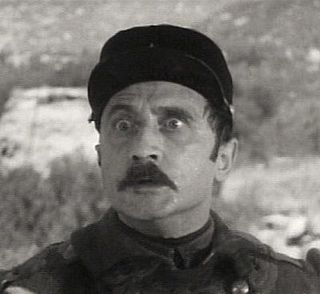
Jean Del Val was a French-born actor, also credited as Jean Gauthier and Jean Gautier.
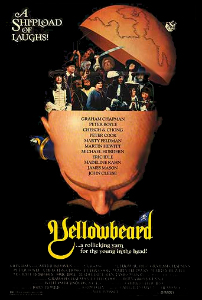
Yellowbeard is a 1983 comedy film directed by Mel Damski and written by Graham Chapman, Peter Cook, Bernard McKenna, and David Sherlock, with an ensemble cast featuring Chapman, Cook, Peter Boyle, Cheech & Chong, Martin Hewitt, Michael Hordern, Eric Idle, Madeline Kahn, James Mason, and John Cleese, and the final cinematic appearances of Marty Feldman, Spike Milligan, and Peter Bull.
This is the order of battle during the Battle of Lepanto on 7 October 1571 in which the Holy League deployed 6 galleasses and 206 galleys, while the Ottoman forces numbered 216 galleys and 56 galliots.
Victoires de la Musique are an annual French award ceremony where the Victoire accolade is delivered by the French Ministry of Culture to recognize outstanding achievement in the music industry. The classical and jazz versions are the Victoires de la musique classique and Victoires du Jazz.

Pirates is a 1986 adventure comedy film written by Gérard Brach, John Brownjohn and Roman Polanski, and directed by Polanski. It was inspired by Polanski's love of classic pirate films, as well as Disneyland's Pirates of the Caribbean attraction. Polanski began planning the film in 1976 as a follow-up to Chinatown, but production was delayed several times due to lack of funding and Polanski's fleeing the United States to avoid sentencing for his confessed rape of a minor.

Redbeard is a series of Belgian comic books, originally published in French, created by writer Jean-Michel Charlier and artist Victor Hubinon in 1959. After their deaths the series was continued by other writers and artists, including Jijé, Christian Gaty, Patrice Pellerin, Jean Ollivier, Christian Perrissin and Marc Bourgne, Jean-Charles Kraehn and Stefano Carloni.

Olivier Levasseur, was a French pirate, nicknamed La Buse or La Bouche in his early days for the speed and ruthlessness with which he always attacked his enemies as well as his ability to verbally attack his opponents. He is known for allegedly hiding one of the biggest treasures in pirate history, estimated at $1 billion, and leaving a cryptogram behind with clues to its whereabouts.

In English-speaking popular culture, the modern pirate stereotype owes its attributes mostly to the imagined tradition of the 18th-century Caribbean pirate sailing off the Spanish Main and to such celebrated 20th-century depictions as Captain Hook and his crew in the theatrical and film versions of J. M. Barrie's Peter Pan, Robert Newton's portrayal of Long John Silver in the 1950 film adaptation of the Robert Louis Stevenson novel Treasure Island, and various adaptations of the Middle Eastern pirate, Sinbad the Sailor. In these and countless other books, films, and legends, pirates are portrayed as "swashbucklers" and "plunderers". They are shown on ships, often wearing eyepatches or peg legs, having a parrot perched on their shoulder, speaking in a West Country accent, and saying phrases like "Arr, matey" and "Avast, me hearty". Pirates have retained their image through pirate-themed tourist attractions, film, toys, books and plays.

The Battle of Orbetello, also known as the Battle of Isola del Giglio, was a major naval engagement of the Franco-Spanish War of 1635. It was fought on 14 June 1646 off the Spanish-ruled town of Orbetello, on the coast of Tuscany, Italy, between a French fleet led by Admiral Armand de Maillé, Marquis of Brézé, and a Spanish fleet commanded by Miguel de Noronha, 4th Count of Linhares sent to break the blockade of Orbetello and relieve the town, besieged since 12 May by a French army under the command of Prince Thomas of Savoy. The Battle of Orbetello was tactically very unusual, since it was fought by sailing ships towed by galleys in a light breeze.
The battle of Tarragona fought between 4 and 6 July 1641, was a naval engagement of the Reapers' War in which a Spanish galley fleet led by the Duke of Fernandina attempted to break the French naval blockade of Tarragona, at that time besieged by land by the French and Catalan armies under the French Viceroy of Catalonia. The French blockading fleet was under command of Henri d'Escoubleau de Sourdis, Archbishop of Bordeaux, and consisted both of sailing and rowing vessels. On 4 July it was engaged by the Spanish galleys, of which some managed to enter the port of the town during a fierce action. In the end, a large number of Spanish galleys were abandoned when their crews panicked and fled to the beaches. On the night of 6 July Abraham Duquesne escorted 5 fireships to the mole of the harbor, where the Spanish galleys were abandoned, and set fire to them.

Alain Ayroles is a French author, playwright, screenwriter and translator known best for his graphic novels Garulfo, De cape et de crocs and Les Indes Fourbes.
Pedro Vélaz de Medrano y Manso de Zúñiga, II Lord of Tabuérniga was the captain general of the Armada de Barlovento and custodian of the Spanish Treasure Fleet, seargent major, governor of the Tercio of Álava, governor of five galleons from Naples, squadron Admiral, General, a sailor and prominent Spanish noble during the reign of Felipe IV.
Ottavio d'Aragona Taglivia (1565-1623) was a Sicilian nobleman in the service of the Hispanic Monarchy. He served under Viceroy of Naples and Sicily Pedro Téllez-Girón, Duke of Osuna as a highly successful naval commander.















